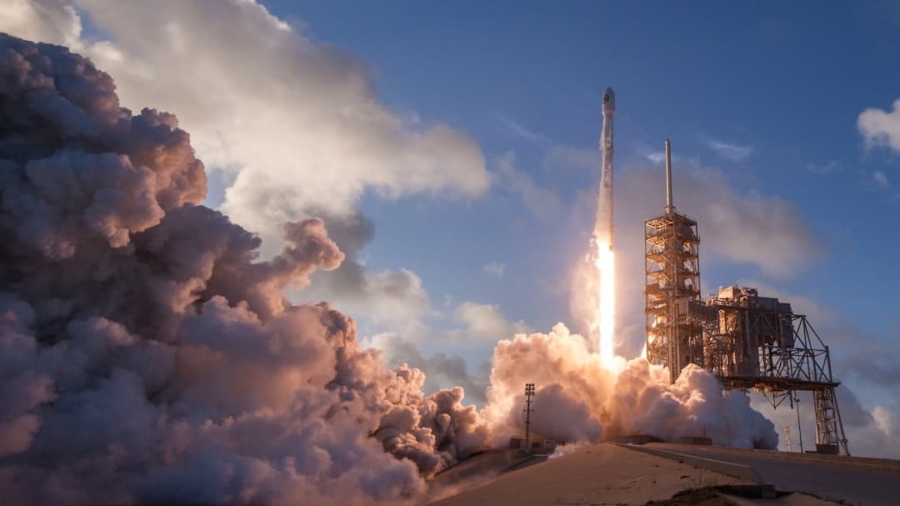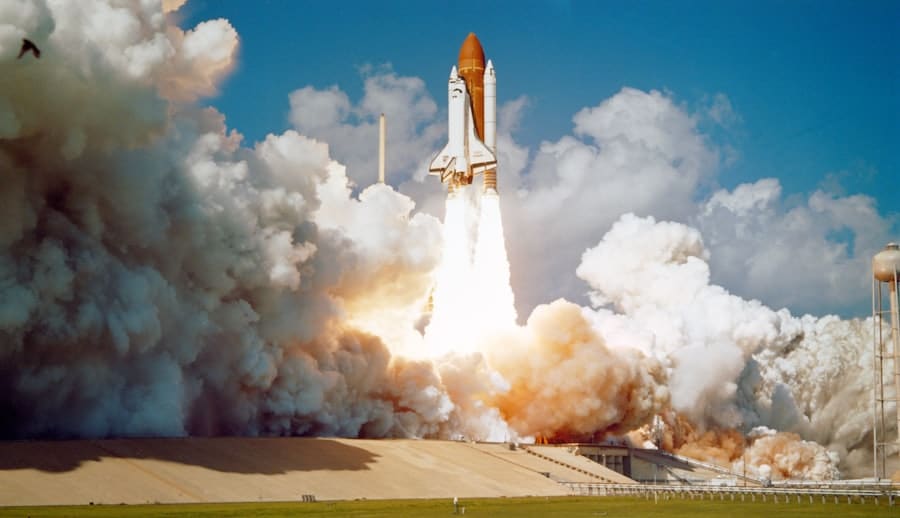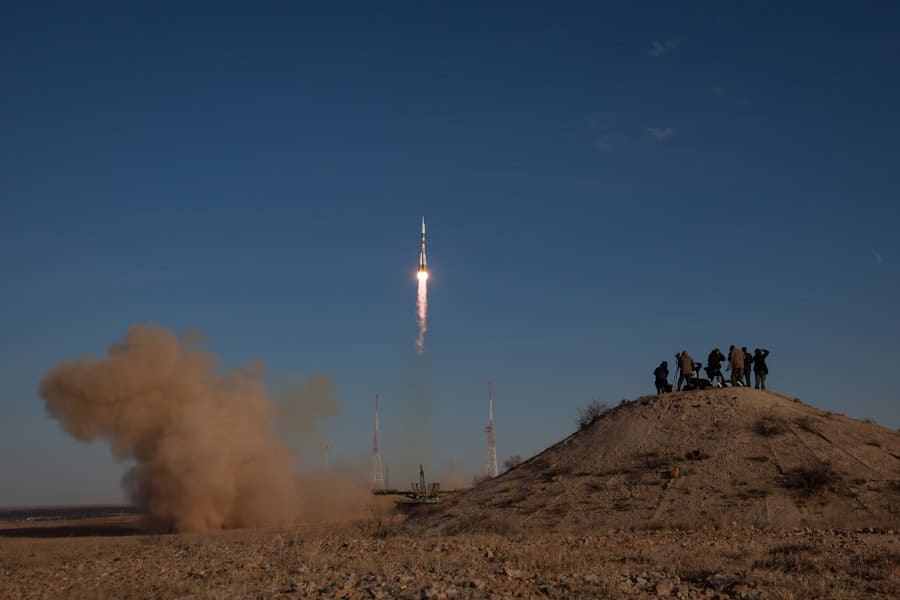The concept of space tourism has transitioned from the realm of science fiction into a burgeoning industry, capturing the imagination of millions around the globe. The early 2000s marked a pivotal moment when Dennis Tito, an American businessman, became the first space tourist, spending nearly $20 million for a trip to the International Space Station (ISS) aboard a Russian Soyuz spacecraft. This historic journey ignited interest in the potential for commercial space travel, paving the way for a new era where private companies began to explore the possibilities of offering suborbital and orbital experiences to civilians.
Companies like SpaceX, Blue Origin, and Virgin Galactic have since emerged as key players, each with unique visions and technologies aimed at making space accessible to those who can afford it. As technology has advanced, so too has the feasibility of space tourism. The development of reusable rocket technology has significantly reduced costs associated with launching payloads into space.
For instance, SpaceX’s Falcon 9 rocket has demonstrated the ability to return to Earth and be reused multiple times, which not only lowers expenses but also enhances safety protocols. This innovation has encouraged investment and competition within the sector, leading to a surge in interest from both potential tourists and investors. The allure of experiencing weightlessness, witnessing Earth from above, and participating in groundbreaking scientific research has made space tourism an enticing prospect for affluent individuals seeking unique experiences.
Key Takeaways
- Commercial space tourism is on the rise with companies like SpaceX and Blue Origin offering opportunities for civilians to travel to space.
- Space tourism has the potential to become a multi-billion dollar industry, creating jobs and stimulating economic growth.
- Challenges in the commercial space tourism industry include safety concerns, high costs, and the need for infrastructure development.
- Both government and private sector play a crucial role in the development and regulation of space tourism.
- Space tourism can have a significant impact on local economies, attracting tourists and creating new business opportunities.
The Economic Potential of Space Tourism
The economic potential of space tourism is vast and multifaceted, with projections suggesting that the industry could generate billions of dollars in revenue over the next few decades. According to a report by Morgan Stanley, the space tourism market could be worth approximately $1 trillion by 2040, driven by advancements in technology and increasing consumer interest. This growth is not limited to ticket sales alone; it encompasses a wide range of ancillary services and products, including training programs for aspiring astronauts, luxury accommodations near launch sites, and even merchandise related to space travel.
The burgeoning space tourism industry is expected to create thousands of jobs across various sectors, including engineering, hospitality, and transportation. As companies invest in infrastructure to support space travel—such as launch facilities and training centers—local economies stand to benefit significantly.
For example, SpaceX’s operations in Boca Chica, Texas, have already spurred job creation and increased demand for local services, from construction to hospitality. This ripple effect can lead to a more robust economy in regions that embrace the space tourism industry.
Challenges and Opportunities in the Commercial Space Tourism Industry
Despite its promising outlook, the commercial space tourism industry faces numerous challenges that could hinder its growth trajectory. One of the most pressing issues is safety. The inherent risks associated with space travel are significant; even minor malfunctions can lead to catastrophic outcomes.
High-profile incidents, such as the tragic loss of SpaceShipTwo during a test flight in 2014, underscore the importance of rigorous safety protocols and testing. Companies must invest heavily in research and development to ensure that their spacecraft are not only capable of reaching space but also safe for human passengers. In addition to safety concerns, regulatory hurdles pose another challenge for the industry.
Governments around the world are still grappling with how to effectively regulate commercial space travel. The Federal Aviation Administration (FAA) in the United States has established guidelines for commercial launches, but as the industry evolves, so too must the regulatory framework. Striking a balance between fostering innovation and ensuring public safety will be crucial for the industry’s long-term viability.
However, these challenges also present opportunities for collaboration between private companies and government agencies to develop comprehensive regulations that promote safe practices while encouraging growth.
The Role of Government and Private Sector in Space Tourism
The interplay between government entities and private companies is vital in shaping the future of space tourism. Historically, government agencies like NASA have been at the forefront of space exploration, but as private companies have entered the arena, their roles have begun to shift. Governments are increasingly recognizing the potential benefits of partnering with private enterprises to advance space exploration and tourism initiatives.
For instance, NASA’s Commercial Crew Program has enabled private companies like SpaceX and Boeing to develop crewed spacecraft that transport astronauts to the ISS, demonstrating how public-private partnerships can accelerate technological advancements. Moreover, government support can provide a safety net for emerging companies in the space tourism sector. By offering grants or tax incentives, governments can encourage innovation and investment in this nascent industry.
Countries like the United Arab Emirates have already begun to position themselves as leaders in space tourism by investing heavily in infrastructure and research initiatives. The establishment of regulatory frameworks that support private ventures while ensuring safety standards will be essential for fostering a thriving commercial space tourism ecosystem.
The Impact of Space Tourism on Local Economies
The emergence of space tourism is poised to have a profound impact on local economies, particularly in regions that host launch facilities or training centers. As companies like Blue Origin establish operations in rural areas such as West Texas or Washington State, they bring with them job opportunities and increased economic activity. Local businesses—ranging from hotels and restaurants to retail shops—stand to benefit from an influx of tourists and employees associated with these operations.
For example, towns near launch sites may experience a surge in visitors during launch events, leading to increased revenue for local businesses. Furthermore, the development of infrastructure related to space tourism can lead to long-term economic benefits. Investments in transportation networks, such as roads and airports, can enhance connectivity and accessibility for both tourists and residents alike.
This infrastructure development can stimulate growth in other sectors as well, creating a more diversified local economy. As communities adapt to accommodate the needs of space tourists—such as providing specialized training programs or unique experiences—new business opportunities will emerge, further bolstering local economies.
Environmental Concerns and Sustainability in Space Tourism
Contribution to Atmospheric Warming
Studies have shown that black carbon emissions from rocket launches can contribute to atmospheric warming by affecting cloud formation and altering weather patterns. This has sparked concerns about the long-term effects of space tourism on the environment.
Sustainable Propulsion Systems
In response to these concerns, companies are exploring more sustainable alternatives for propulsion systems. For example, Blue Origin’s New Shepard uses a combination of liquid hydrogen and liquid oxygen as propellants, which produce water vapor when burned, minimizing harmful emissions compared to traditional rocket fuels.
The Future of Electric Propulsion
Additionally, there is ongoing research into electric propulsion systems that could revolutionize how spacecraft are powered for suborbital flights. As public awareness of environmental issues grows, companies that prioritize sustainability will likely gain a competitive edge in attracting eco-conscious consumers.
The Future of Space Tourism and Its Potential for Growth
Looking ahead, the future of space tourism appears bright but will require careful navigation through various challenges. As technology continues to advance and costs decrease, more individuals may find themselves able to afford a trip to space. Companies are already exploring different models for making space travel more accessible; for instance, Virgin Galactic has announced plans for commercial flights that could allow passengers to experience weightlessness for a few minutes at a time.
Moreover, as public interest grows, there is potential for diversification within the industry. Beyond suborbital flights for thrill-seekers, opportunities may arise for longer-duration stays aboard space hotels or even lunar tourism as technology progresses. Companies like Axiom Space are already planning missions that include stays on private modules attached to the ISS or even lunar landings in collaboration with NASA’s Artemis program.
This diversification could lead to an expansive market catering not only to wealthy tourists but also to researchers and scientists seeking unique environments for experimentation.
The Ethical and Social Implications of Commercial Space Tourism
The rise of commercial space tourism raises important ethical questions regarding equity and access. As this industry develops primarily for affluent individuals who can afford exorbitant ticket prices—often exceeding hundreds of thousands of dollars—it risks perpetuating social inequalities. Critics argue that while some people venture into space for leisure or adventure, many others struggle with basic needs on Earth.
This disparity raises questions about priorities in resource allocation: should investments be directed toward luxury experiences in space when pressing issues like poverty and climate change persist? Additionally, there are concerns about cultural implications as humanity expands its presence beyond Earth. The commercialization of space may lead to commodification of celestial bodies or phenomena that hold cultural significance for various communities around the world.
As private companies stake claims on resources or establish tourist destinations on celestial bodies like the Moon or Mars, it becomes crucial to consider who benefits from these ventures and how they align with broader ethical considerations regarding stewardship of our solar system. In conclusion, while commercial space tourism presents exciting opportunities for exploration and economic growth, it also necessitates careful consideration of its implications on society and our planet. Balancing innovation with responsibility will be key as we venture into this new frontier.
If you are interested in the latest technology trends, you may also want to check out the article Apple Watch vs Samsung Galaxy Watch. This article compares two popular smartwatches and discusses their features and functionalities. Just like the advancements in commercial space tourism, the tech industry is constantly evolving and offering new and innovative products to consumers.
FAQs
What is commercial space tourism?
Commercial space tourism refers to the practice of private individuals paying for a trip to outer space, typically facilitated by a commercial space company.
What are some companies involved in commercial space tourism?
Some of the prominent companies involved in commercial space tourism include SpaceX, Blue Origin, Virgin Galactic, and Boeing.
What are the potential economic impacts of commercial space tourism?
Commercial space tourism has the potential to create new industries, generate revenue from space travel services, and stimulate technological advancements, which can contribute to economic growth.
How much does it cost to participate in commercial space tourism?
The cost of participating in commercial space tourism varies depending on the company and the type of experience offered, but it can range from hundreds of thousands to millions of dollars.
What are some potential challenges for the future of commercial space tourism?
Challenges for the future of commercial space tourism include safety concerns, regulatory hurdles, environmental impacts, and the need for infrastructure development.



